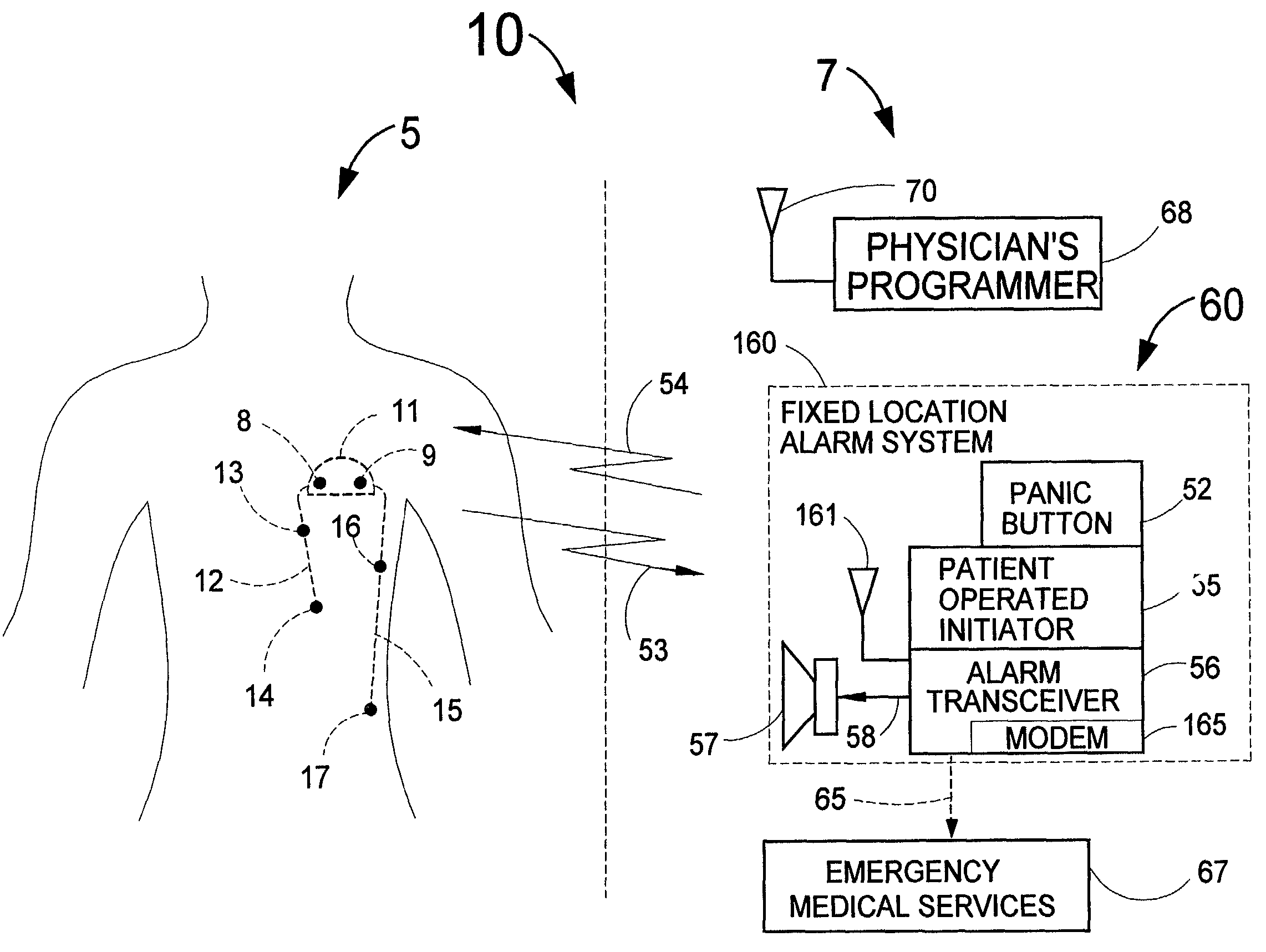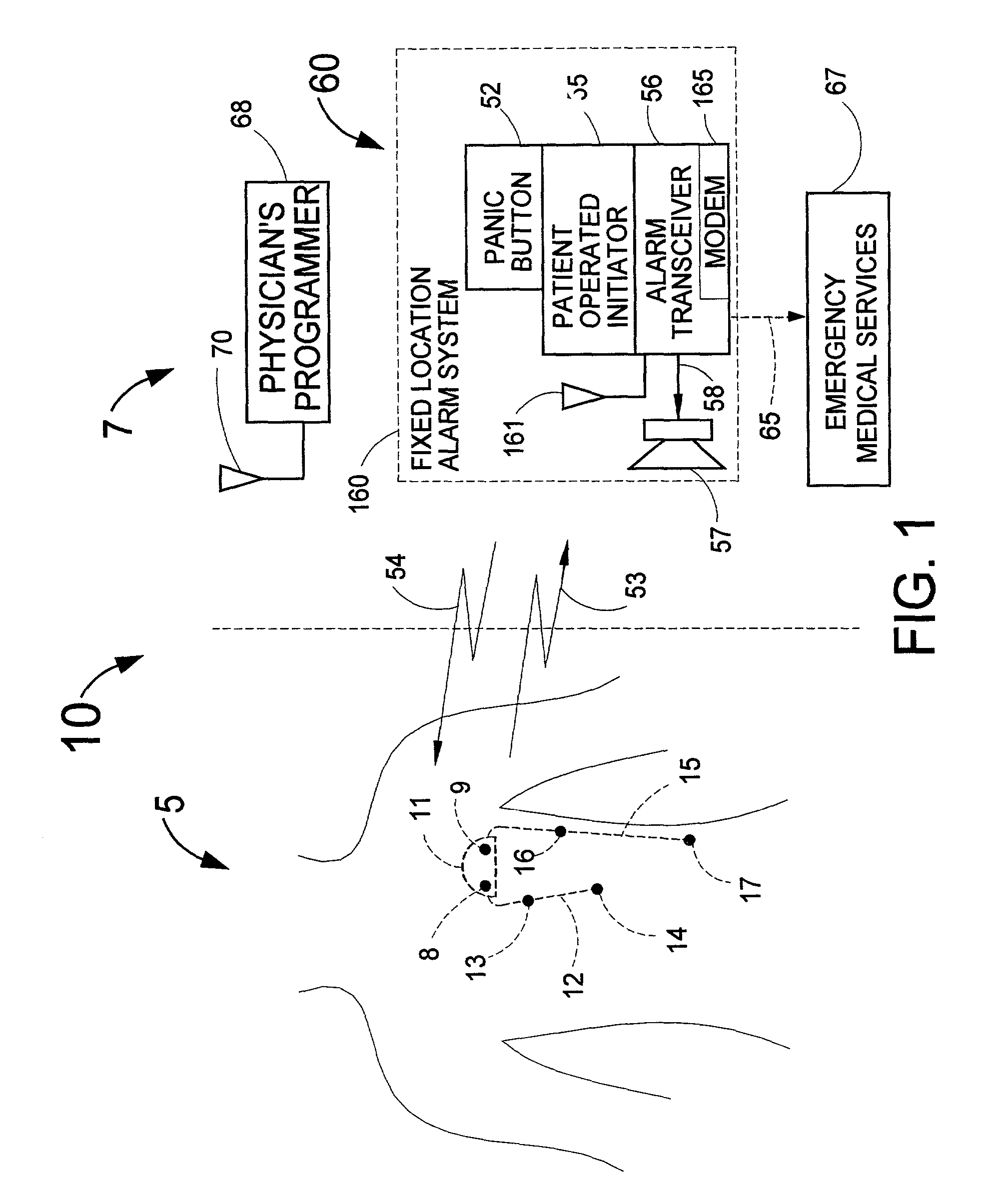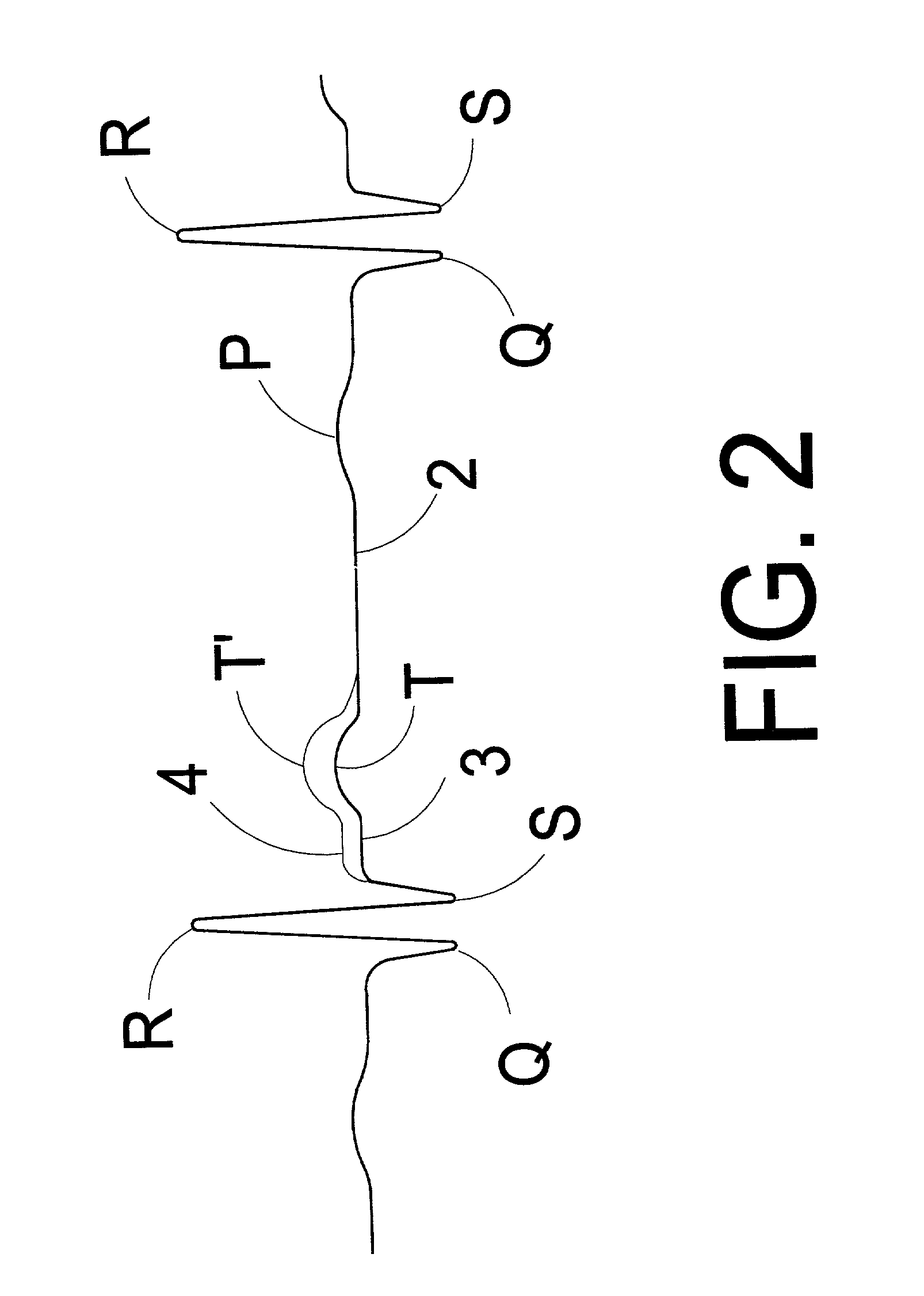Rapid response system for the detection and treatment of cardiac events
a rapid response and cardiac event technology, applied in the field of rapid response system for the detection and treatment of cardiac events, can solve the problems of life-threatening complications of heart disease, myocardial infarction, and no system that provides for early and automatic detection of acute myocardial infarction, and achieve the effect of increasing the heart ra
- Summary
- Abstract
- Description
- Claims
- Application Information
AI Technical Summary
Benefits of technology
Problems solved by technology
Method used
Image
Examples
Embodiment Construction
[0079]FIG. 1 illustrates one embodiment of the cardiosaver system 10 consisting of an implanted medical device 5 which is a cardiosaver 5 and external equipment 7. The cardiosaver 5 consists of an electronics module 11 that has two leads 12 and 15 that have multi-wire electrical conductors with surrounding insulation. The lead 12 is shown with two electrodes 13 and 14. The lead 15 has electrodes 16 and 17. In fact, the cardiosaver 5 could utilize as few as one lead or as many as three and each lead could have as few as one electrode or as many as eight electrodes. Furthermore, electrodes 8 and 9 could be placed on the outer surface of the electronics module 11 without any wires being placed externally to the electronics module 11.
[0080]The lead 12 in FIG. 1 could advantageously be placed through the patient's vascular system with the electrode 14 being placed into the apex of the right ventricle. The electrode 13 could be placed in the right ventricle or right atrium or the superior...
PUM
 Login to View More
Login to View More Abstract
Description
Claims
Application Information
 Login to View More
Login to View More - R&D
- Intellectual Property
- Life Sciences
- Materials
- Tech Scout
- Unparalleled Data Quality
- Higher Quality Content
- 60% Fewer Hallucinations
Browse by: Latest US Patents, China's latest patents, Technical Efficacy Thesaurus, Application Domain, Technology Topic, Popular Technical Reports.
© 2025 PatSnap. All rights reserved.Legal|Privacy policy|Modern Slavery Act Transparency Statement|Sitemap|About US| Contact US: help@patsnap.com



